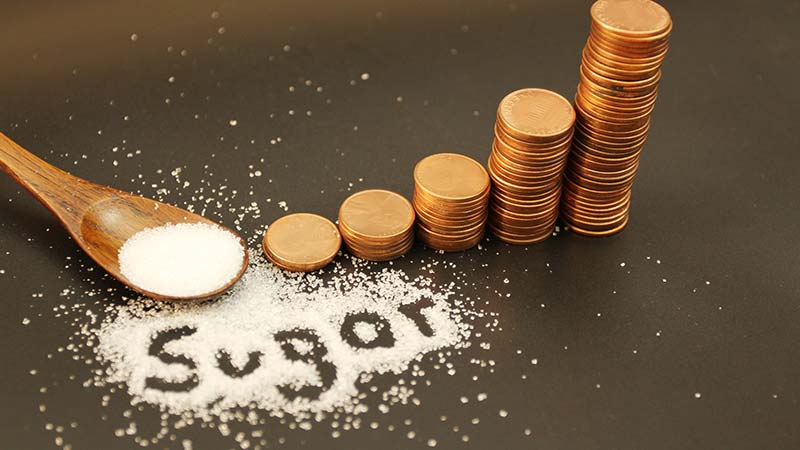
Poor health keeps killing economic growth, but if too many people suddenly get healthy it could burst the big Wall Street bubble.
“No country can be strong whose people are sick and poor.”
— Theodore Roosevelt
Junk food — it’s killing people the world over, and it’s killing economies, too. First it was health experts and scientists; now bankers and economists are raising the red flag.
Sugar is the new tobacco. The world is just beginning to understand its health implications, and the complicity of big industry in its promotion. However, despite sugar’s strong connection with a weak global economy, governments and the junk-food industry continue to encourage its consumption
Health is a key driver of economic growth — as stated by the Morgan Stanley Research report on Sustainable Economics. The Wall Street giant’s forecast, titled The Bitter Aftertaste of Sugar, examines the real challenges sugar consumption poses to policy makers, healthcare experts and corporations, as well as investors trying to weigh the long-term impact on economic growth and industries. Their forecast: higher healthcare costs, lower productivity, and economic disaster — unless something changes.
It’s a competition pitting scientists, health practitioners, bankers, and economists against governments and Big Sugar’s tricks and treats. At this point Big Sugar is winning. Influenced by lobbyists, governments encourage the consumption of sugar by subsidizing junk food. Big Sugar has quietly mirrored Big Tobacco, getting billions hooked on their products. Everyone else is looking at the writing on the wall.
Sugar has become a global staple for billions of people. Consumption has doubled in the last 50 years. Developed nations lead the sugar-induced overfat pandemic, with upwards of 90 percent or more of these adult populations now having excess body fat that feeds chronic illness. But developing nations are quickly catching up, with 40 percent of the world’s diabetes occurring in China and India.
Studies estimate the cost burden of metabolic syndrome is a whopping 75 percent of the total annual $3.2+ trillion (and rising) U.S. healthcare budget. At 15 percent of the U.S. Gross Domestic Product, the highest of all developed nations and still climbing, these costs remain a significant drag on the economy.
But metabolic syndrome is only a relatively small component of sugar-induced illness. To say the U.S. spends three-quarters of its healthcare budget on preventable chronic illnesses is conservative. Led by developing nations, healthcare costs are quickly catching up — the Kaiser Family Foundation estimates a worldwide cumulative loss of $47 trillion between 2011 and 2030.
Credit Suisse, another large multinational financial services company, published its own research report in 2013. This report, “Is Sugar Turning the Economy Sour?” provided a similar forecast. They found that close to 90 percent of general practitioners surveyed in the U.S., Europe and Asia believe excess sugar consumption is linked to the sharp growth in diabetes and obesity, saying that “we cannot ignore the significance and the implications for society and our economy any longer.”
The sugar consumption problem, and all its downstream effects, afflicts men, women, and children (even in utero). While these effects are overwhelming, the remedy is simple: kick the sugar addiction.
A study by Lustig et al. (2016) demonstrated that reducing dietary sugar can quickly reverse cardiovascular and metabolic disease. Children with metabolic syndrome who reduced consumption of added sugars without reducing calories reversed a cluster of chronic conditions — high cholesterol, hypertension, and nonalcoholic liver disease — in only nine days! Another recent study by Vreman, et al. simulated significant health and economic benefits by reducing consumption of added sugars in U.S. adults.
This revolution could literally save the world almost overnight—but it would burst a Wall Street bubble that depends on chronic illness and poor quality of life.
Meanwhile, we have created an entire economy based upon ill health and costly aging, with most Americans surviving more than a decade of infirmity before death while running up untold billions, maybe even trillions, of dollars in care. Consider the rising stock prices of healthcare companies, and the overall long-term performance and stability of this sector. But this robust market sector reflects an unhealthy society.
What if large numbers of individuals improved their health in a short period of time? What if Americans reduced healthcare costs by 50 percent within 12 months? The result would be greatly diminished healthcare needs, and reduced reliance on drugs. Related healthcare stocks would fall, even crash, as pharmaceutical companies, and other healthcare-related stocks, along with junk food companies and those associated with Big Sugar, could burst.
However, this bursting bubble could eventually lead to a great recovery. While recovering from poor health, people would still buy food, just make better choices. Leaner people would have to buy new clothes — often whole new wardrobes. While fast-food chains would lose millions of customers, healthy fresh fruits, vegetables, meats and eggs, would divert untold dollars to family farms and farm stands, and supermarkets that would now stock these items.
Morgan Stanley Research estimated the effect of sugar on diseases and its influence on economic growth. Their high sugar intake simulation showed that by 2035, in 18 years, annual economic/GDP growth could decline from about 2.8 percent (2015) to below 0.3 percent.
But they also find that by reducing sugar by just 100 calories per day per person, the simulation showed growth would be about 2.2 percent in 2035 (about the time when costs for coronary heart disease would be double that of today).
How quickly can there be significant change in the health of an individual, or that of a population?
Throughout my career I have witnessed how patients can follow a two-week food challenge, where sugar and refined carbohydrates are eliminated, with rapid changes to health. It’s not unusual to see big changes in blood sugar, triglycerides, blood pressure and other measurable changes within this two-week period, followed by reductions in body fat, reductions or elimination of medications, reduced needs for medical care, and other changes not unlike the Lustig et al. study noted above.
Over the past 50 years, a massive amount of time and money has been spent calculating and estimating how we can accomplish better health and reduced healthcare costs — a period with the coinciding birth of the overfat pandemic that spearheaded chronic disease, physical impairment and an accompanying proportional rise in healthcare costs. Now the discussions include the significant impairment of global economic growth.








